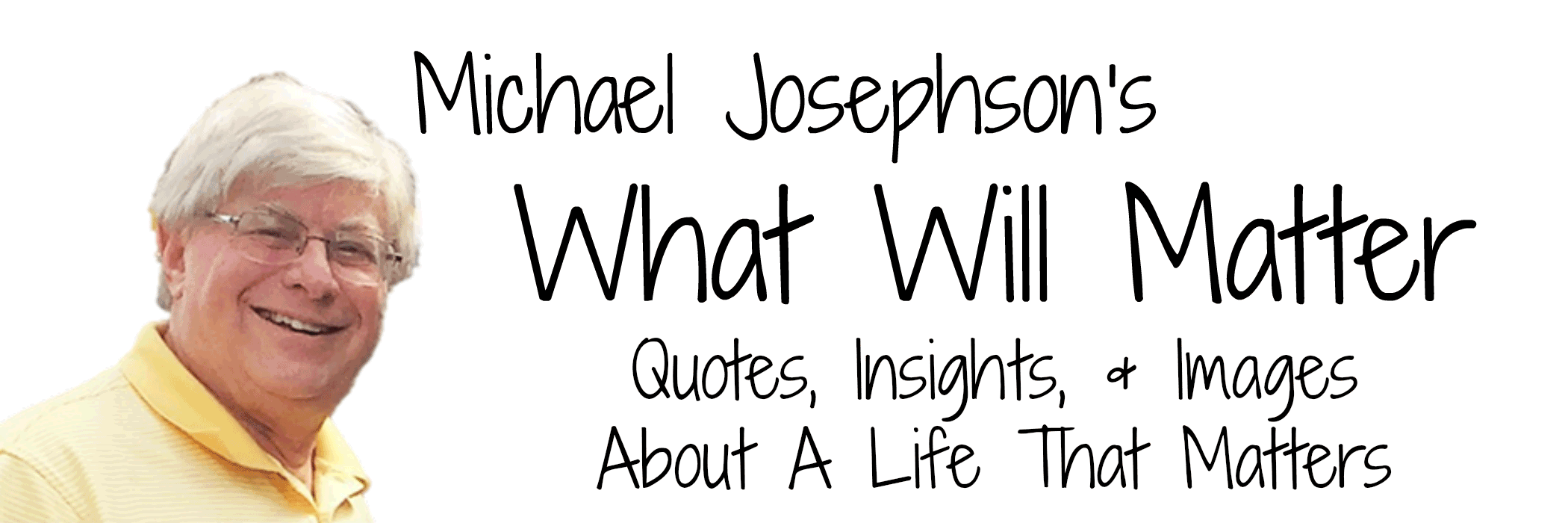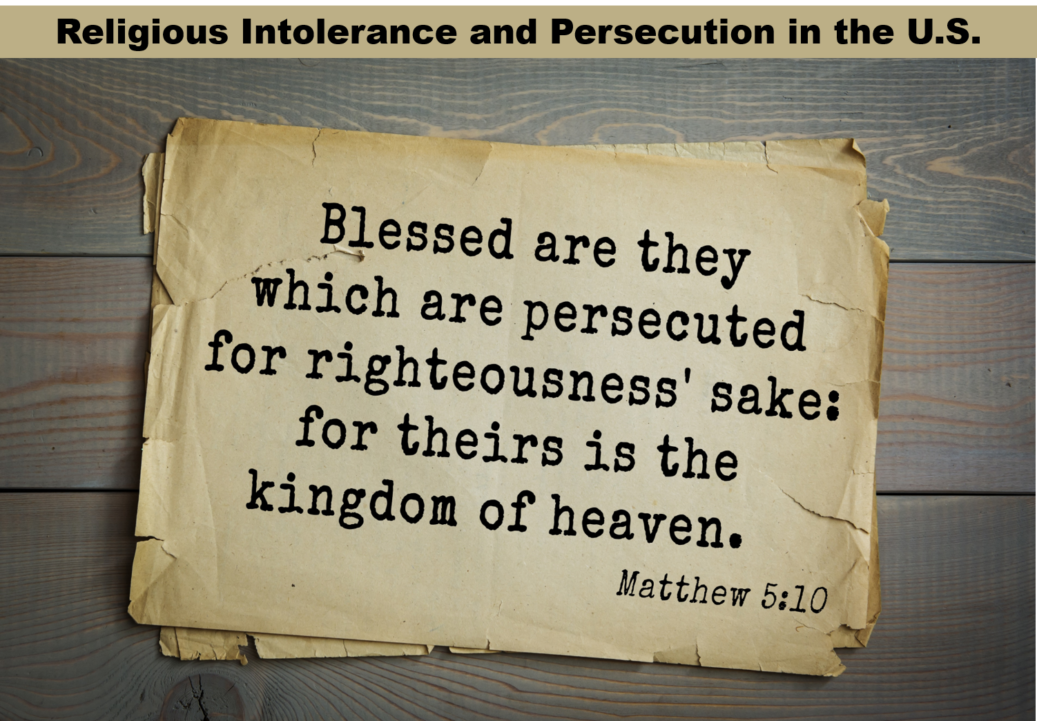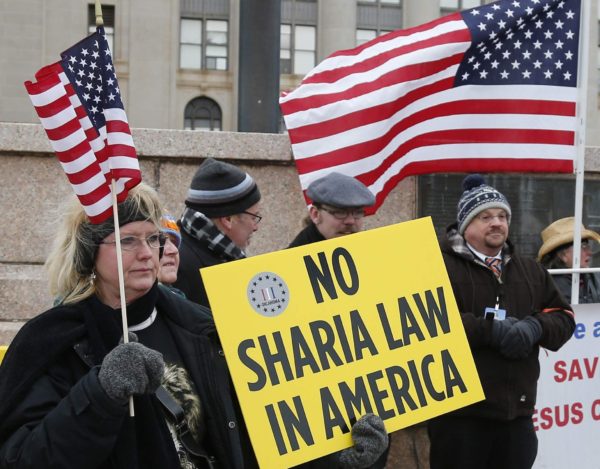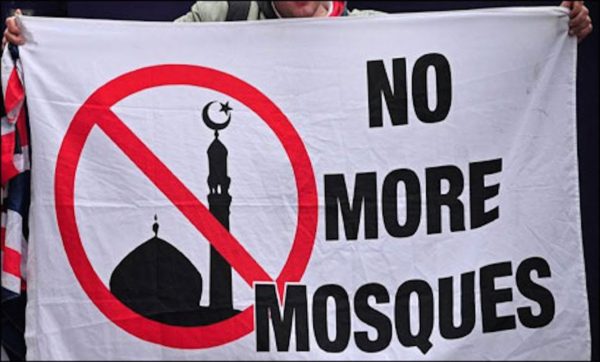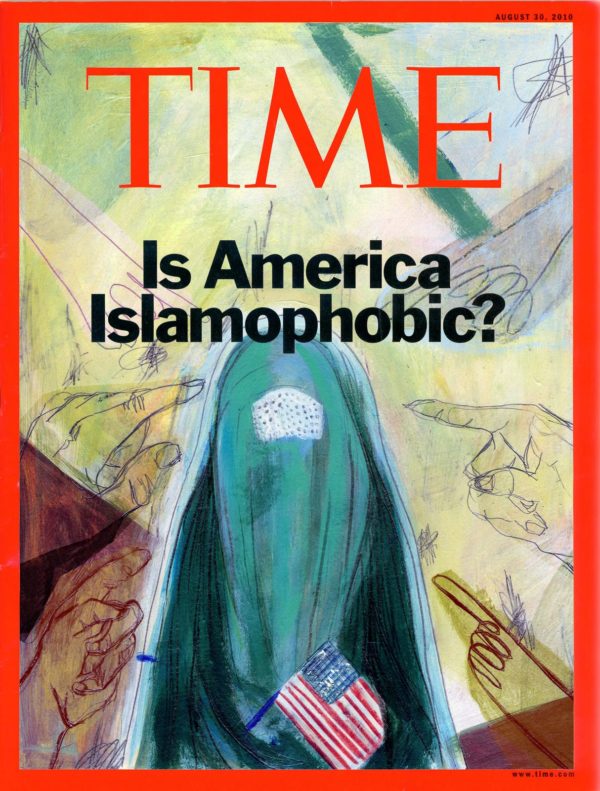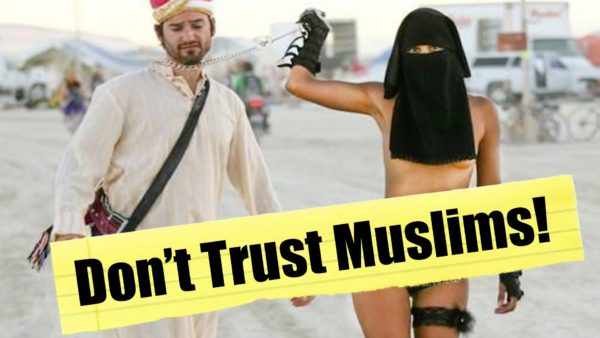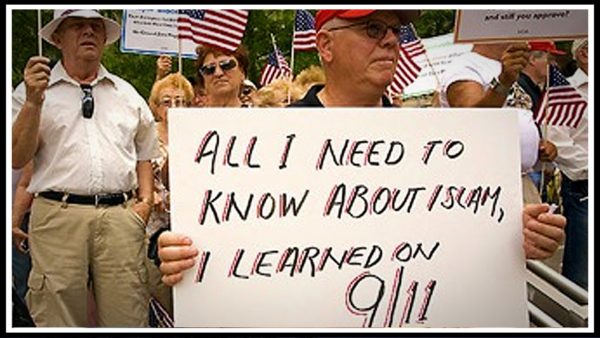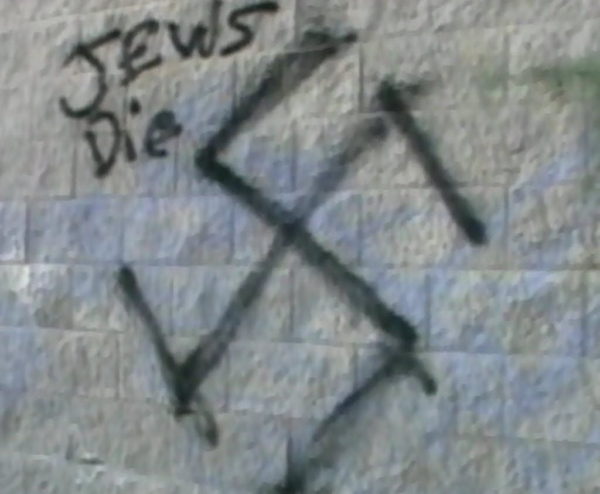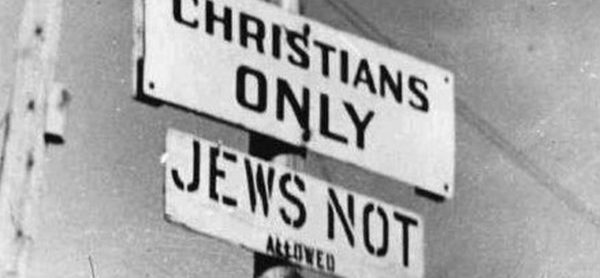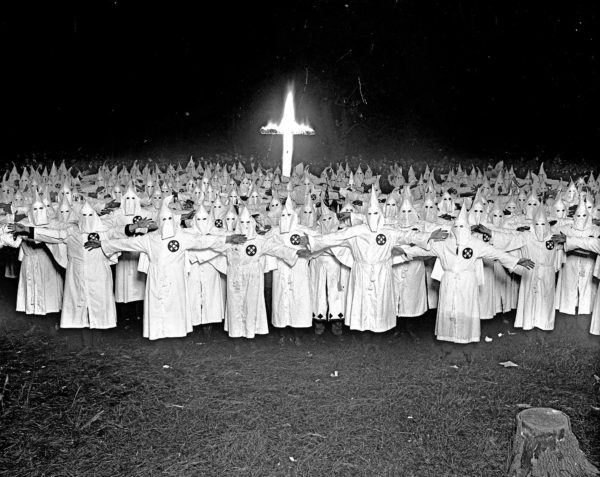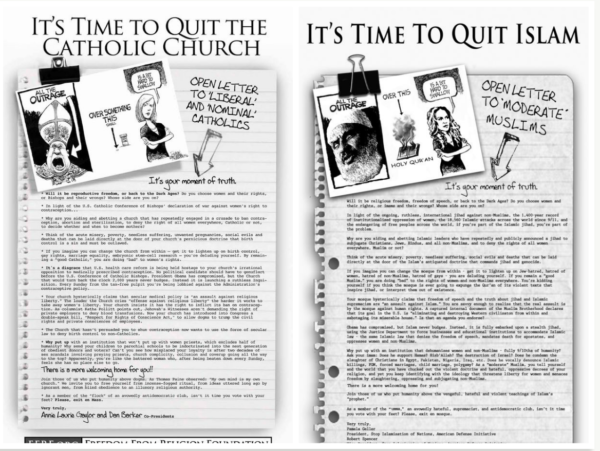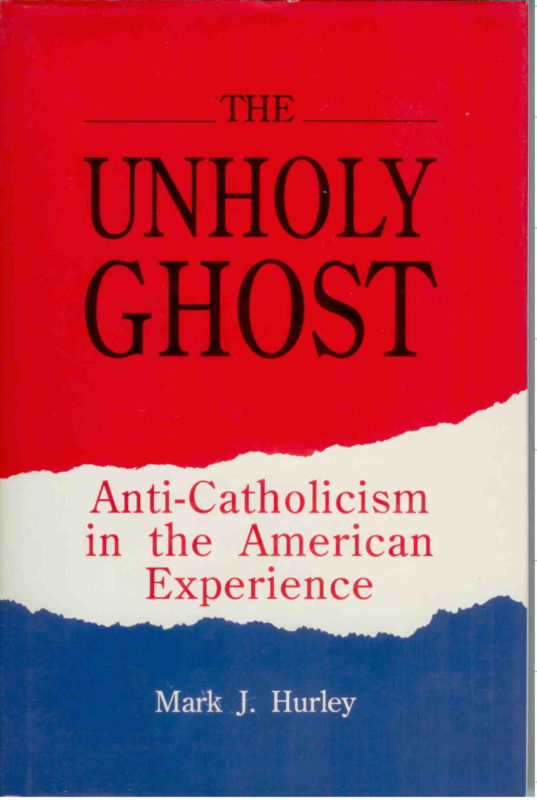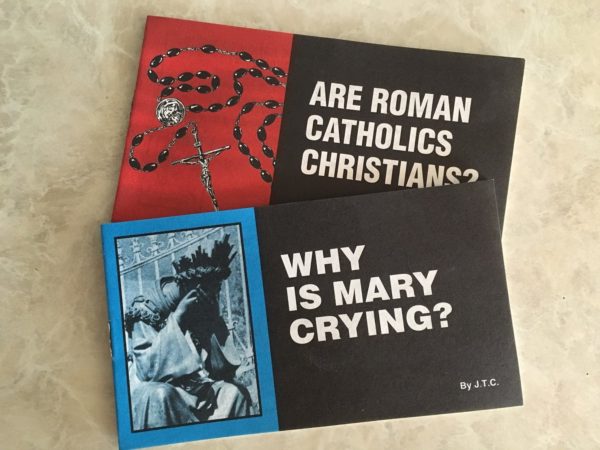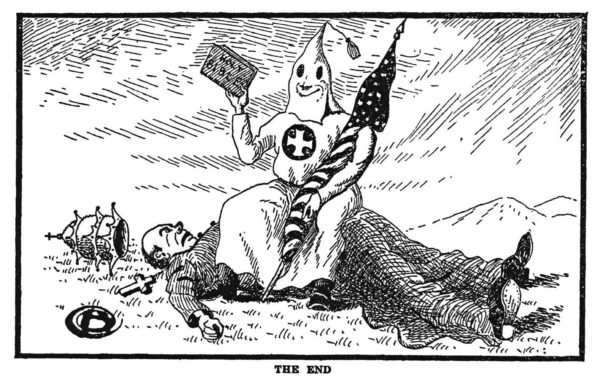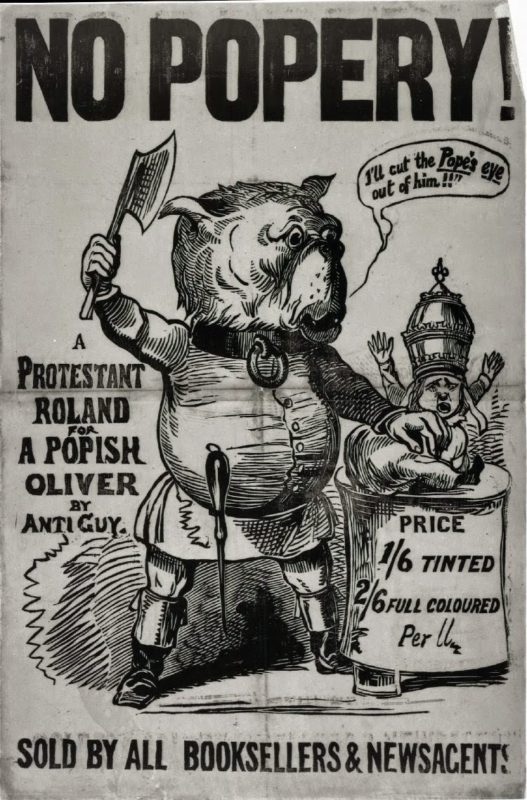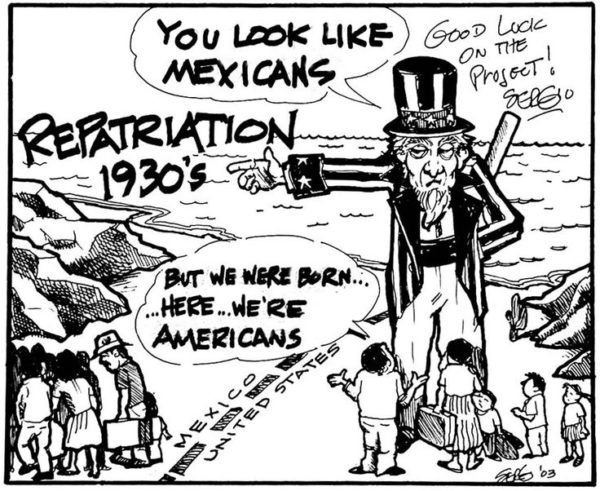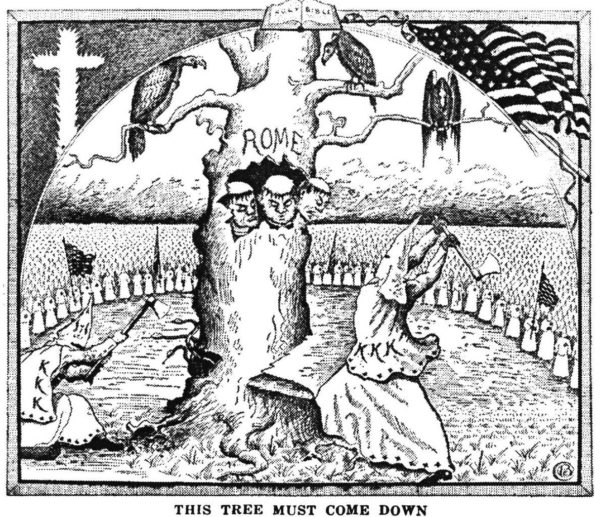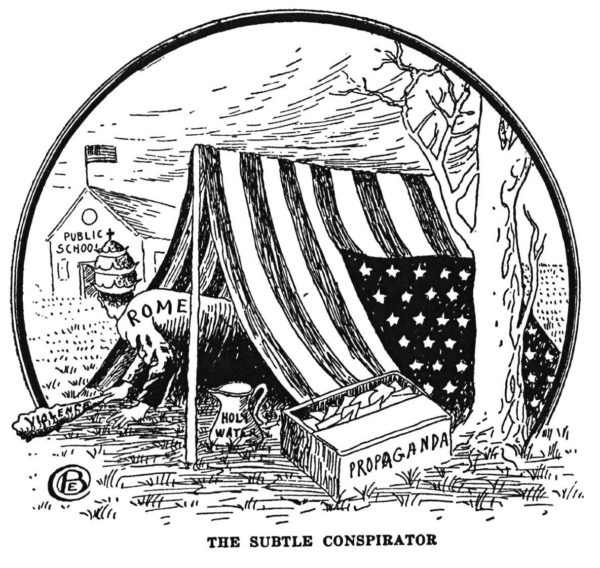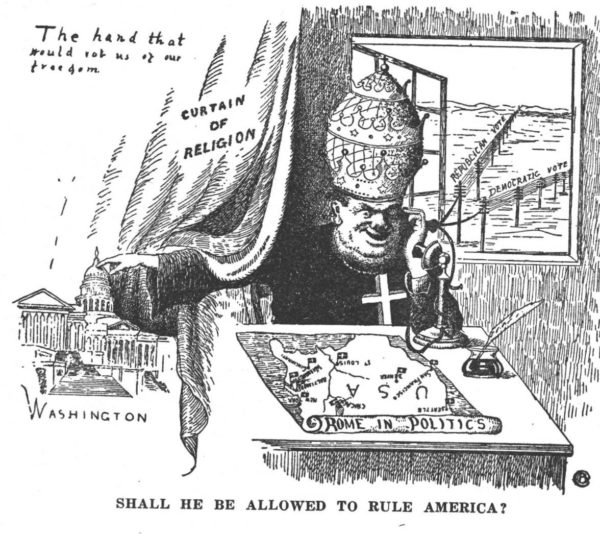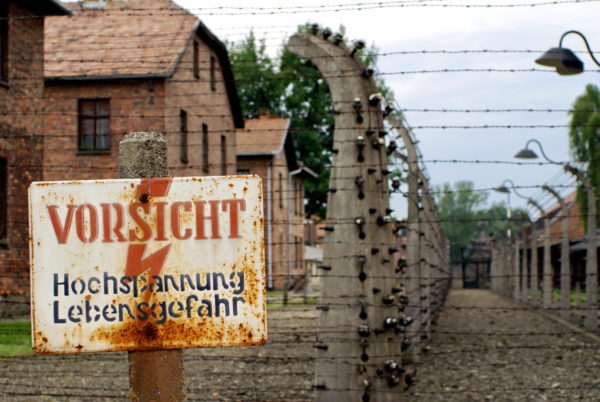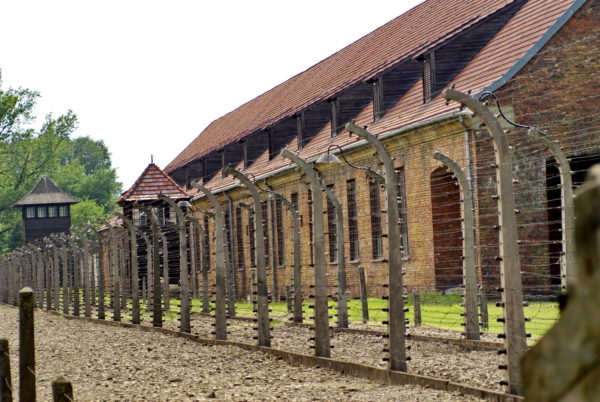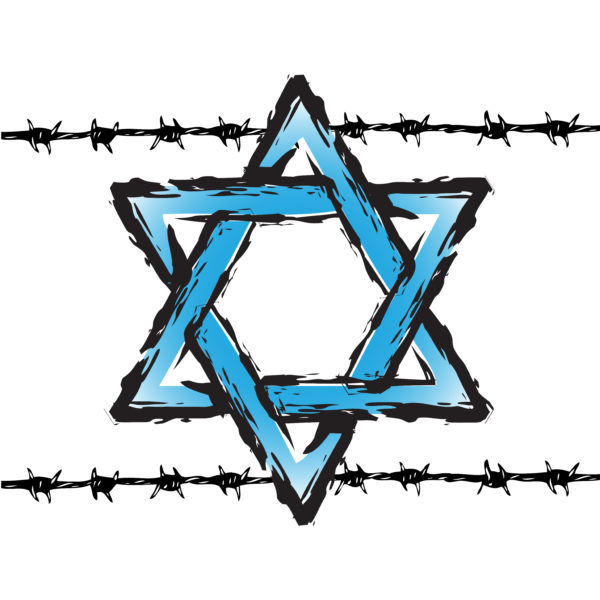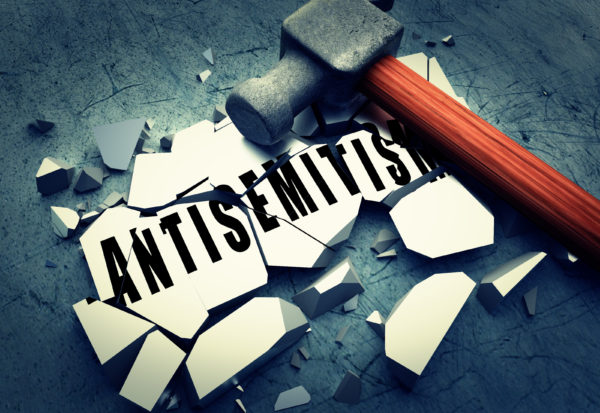Though the concept of religious freedom and tolerance is at the core of American ideals, our history is tainted by prominent examples of religious prejudice and persecution – especially against Catholics, Jews and Muslims.
Here’s some prominent examples:
Religion in Colonial America: Trends, Regulations, and Beliefs
https://www.facinghistory.org/nobigotry/religion-colonial-america-trends-regulations-and-beliefs
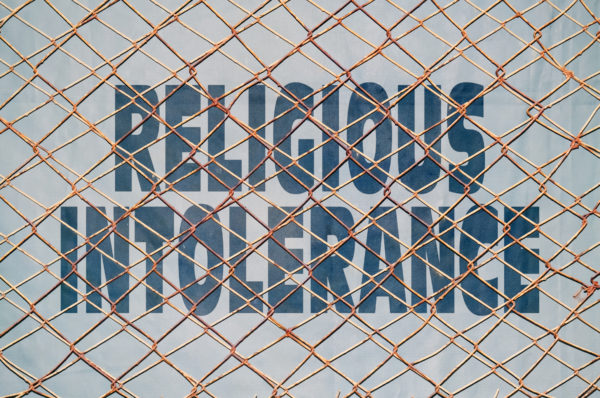 To understand how America’s current balance among national law, local community practice, and individual freedom of belief evolved, it’s helpful to understand some of the common experiences and patterns around religion in colonial culture in the period between 1600 and 1776.
To understand how America’s current balance among national law, local community practice, and individual freedom of belief evolved, it’s helpful to understand some of the common experiences and patterns around religion in colonial culture in the period between 1600 and 1776.
In the early years of what later became the United States, Christian religious groups played an influential role in each of the British colonies, and most attempted to enforce strict religious observance through both colony governments and local town rules.
Most attempted to enforce strict religious observance. Laws mandated that everyone attend a house of worship and pay taxes that funded the salaries of ministers. Eight of the thirteen British colonies had official, or “established,” churches, and in those colonies dissenters who sought to practice or proselytize a different version of Christianity or a non-Christian faith were sometimes persecuted.
Although most colonists considered themselves Christians, this did not mean that they lived in a culture of religious unity. Instead, differing Christian groups often believed that their own practices and faiths provided unique values that needed protection against those who disagreed, driving a need for rule and regulation.
In Europe, Catholic and Protestant nations often persecuted or forbade each other’s religions, and British colonists frequently maintained restrictions against Catholics. In Great Britain, the Protestant Anglican church had split into bitter divisions among traditional Anglicans and the reforming Puritans, contributing to an English civil war in the 1600s. In the British colonies, differences among Puritan and Anglican remained.
Between 1680 and 1760 Anglicanism and Congregationalism, an offshoot of the English Puritan movement, established themselves as the main organized denominations in the majority of the colonies. As the seventeenth and eighteenth century passed on, however, the Protestant wing of Christianity constantly gave birth to new movements, such as the Baptists, Methodists, Quakers, Unitarians and many more, sometimes referred to as “Dissenters.” In communities where one existing faith was dominant, new congregations were often seen as unfaithful troublemakers who were upsetting the social order.
Despite the effort to govern society on Christian (and more specifically Protestant) principles, the first decades of colonial era in most colonies were marked by irregular religious practices, minimal communication between remote settlers, and a population of “Murtherers, Theeves, Adulterers, [and] idle persons.”
Read full article at: https://www.facinghistory.org/nobigotry/religion-colonial-america-trends-regulations-and-beliefs
WHEN AMERICA HATED CATHOLICS
By JOSH ZEITZ September 23, 2015 POLITICO.COM
http://www.politico.com/magazine/story/2015/09/pope-francis-visit-catholic-history-213177
In the late 19th century, statesmen feared that Catholic immigrants were less than civilized (and less than white).
IN the late nineteenth century, political cartoonist Thomas Nast regularly lambasted Irish Catholic immigrants as drunkards and barbarians unfit for citizenship; signs that read, “No Irish Need Apply,” lined shop windows in Boston and New York and dotted the classified pages in many of the country’s leading papers; statesmen warned about the dangers of admitting Catholics from Southern and Eastern Europe onto American shores, for fear that they were something less than civilized (and less than white). It wasn’t unusual for respectable politicians to wonder aloud whether Catholics could be loyal to their adoptive country and to the Pope.
What a difference a few decades can make. Today, the grandchildren and great-grandchildren of these Catholic immigrants occupy the halls of Congress, governors’ mansions and state legislatures. One of them currently resides in the Naval Observatory. And when the head of the Catholic Church comes to visit, he will be warmly welcomed and hailed by politicians of all parties and all faiths.
Indeed, America has traveled a long road since the days when many native-born Americans regarded Catholic immigrants as an ideological and racial threat.
But it’s also a fitting time to recall how things once were. Pope Francis arrives amid a political season rife with violent rhetoric directed at millions of Catholic immigrants and their American-born children. Much like an earlier generation of newcomers who faced a toxic blend of racial and nativist backlash, today’s Catholic immigrants have found themselves the unwitting subject of an intense debate about the very meaning of what it means to be an American.
Between 1840 and 1924, over 30 million European immigrants relocated to the United States. Many were Catholic, hailing from as far North as Ireland, as far South as Sicily and as far east as Poland. In a country established principally by English-speaking Protestants who traced their ancestry to Northern Europe, these newcomers often met with hostility and derision. From the burning of Boston’s Charlestown Convent in 1834 and the rise of the single-issue, anti-immigrant Know Nothing party in the 1850s (an organization that, for a brief moment, controlled dozens of congressional seats and enjoyed extensive influence within the political anti-slavery coalition)—to the No Irish Need Apply signs of the 1890s—immigrant Catholics faced the brunt of Protestant America’s rage.
See full article at
http://www.politico.com/magazine/story/2015/09/pope-francis-visit-catholic-history-213177
Anti-Catholicism in the United States
OCTOBER 11, 2016 by TRENT HORN http://catholicexchange.com/anti-catholicism-in-the-united-states

In 2014 the U.S. Supreme Court ruled in Burwell v. Hobby Lobby Stores, Inc. that some businesses were exempt from the Affordable Care Act contraception mandate if they had a religious objection to it. After the decision was released, Ronald Lindsay, an advocate for atheism and author of the book The Necessity of Secularism, penned an online essay titled, “The Uncomfortable Question: Should we Have Six Catholic Justices on the Supreme Court?” Lindsay mentioned past Catholic prejudice and his own risk of sounding bigoted, but he still argued that the Court’s ruling could be explained only as the result of Catholics following the rule of the pope rather than the rule of law.
Imagine the outcry if Lindsay had complained about a group of female judges he claimed were biased against men. What if Lindsay had complained that there were too many Jewish judges on a certain appeal circuit? In those cases there would be widespread condemnation, but because Lindsay attacked Catholics, he was given a free pass.
This double standard is nothing new. When we trace the history of Catholicism in the United States back through the centuries we see that not only is anti-Catholicism the last acceptable prejudice, it was also one of the first.
Religious “freedom” in the New World
In the sixteenth and seventeenth centuries, British colonists traveled to the New World in search of religious freedom and they found it—but only for their respective churches. Most of the colonies established some form of Anglicanism or congregationalism as their official religion while other Protestants, not to mention Jews and Catholics, were subject to persecution if they did not attend these worship services.
Some colonies would not even tolerate the existence of these religious groups, which is evident in Massachusetts’s “Act against Jesuits and Popish Priests,” passed in 1700, which gave Catholics several months notice that they had to leave the province. Even the colony of Rhode Island, whose tolerance for members of religious minorities earned it the nickname “Rogue’s Island,” forbade Catholics from serving in public office.
Why were Catholics treated so poorly? Many of these early eighteenth-century restrictions were a response to the so-called “Jacobite uprising” in England in 1745 that attempted to install the Catholic Prince of Wales, James Stuart, to the English, Scottish, and Irish thrones. The plan failed, leaving the prince’s father James II as the last Catholic monarch to ever reign over the British Isles.
The other prominent location of Catholics in America was the colony of Maryland, which its founder George Calvert actually called terra mariae, or Mary Land. Even though this colony would become home to the first American diocese, it still had a majority Protestant population. After Calvert’s death, his son Cecil gave the following instructions to the governor of Maryland in hopes that a Protestant majority would not erode the religious freedom Catholic’s enjoyed: “[I]nstruct all the Roman Catholics to be silent upon all occasions of discourse concerning matters of Religion; and that the said Governor & Commissioners treat the Protestants with as much mildness and favor as Justice will permit.”
Read full article at http://catholicexchange.com/anti-catholicism-in-the-united-states.
Anti-Catholic cartoons
____________ ____________________
____________________
Editor’s note: This post is a shorter version of an article that will appear in the November-December 2016 issue of Catholic Answers Magazine. To subscribe, click here for an introductory 25 percent discount on a one-year subscription.
This article is reprinted with permission from our friends at Catholic Answers.
ANTISEMITISM
Anti-Semitism in the 1920s and 1930s
http://www.alba-valb.org/resources/lessons/jewish-volunteers-in-the-spanish-civil-war/anti-semitism-in-the-1920s-and-1930s
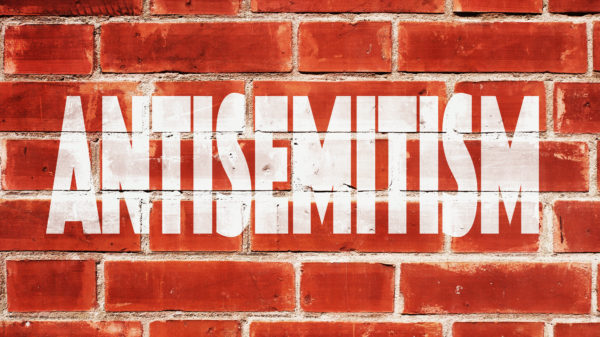 Ed Balchowsky, Illinois-born volunteer in the Abraham Lincoln Brigade, recalled later in life that he had “learned about oppression at a very early age because for years I was the only Jewish child in my hometown.” Unable to strike back against bigotry in the United States, with the onset of the Spanish civil war, Balchowsky felt “grateful for the opportunity to fight what I had found no way to fight at home.”
Ed Balchowsky, Illinois-born volunteer in the Abraham Lincoln Brigade, recalled later in life that he had “learned about oppression at a very early age because for years I was the only Jewish child in my hometown.” Unable to strike back against bigotry in the United States, with the onset of the Spanish civil war, Balchowsky felt “grateful for the opportunity to fight what I had found no way to fight at home.”
Anti-Semitism did not originate with Hitler. Based on the traditional hostility of Christianity to Judaism, Jews had been persecuted since at least the Middle Ages. Anti-Semitism existed in America from early colonial days. Until the Civil War, however, as long as Jews were only a small percentage of the country’s population, it remained latent. Anti-Semitism became more open in the 1880s with the arrival of approximately two million Jewish immigrants from Eastern Europe. They came mostly from areas of the Russian empire where religious persecution was common. By the end of the nineteenth century conditions for Jews worsened with the passage of more restrictive legislation and recurrent government sponsored violent attacks against Jewish communities called pogroms. Jews began fleeing in great numbers to the United States. Many Americans who traced their roots to northwestern Europe and Scandinavia grew increasingly concerned with the arrival of immigrants from Southern and Eastern Europe whom they considered to belong to inferior “races” and additionally in the case of Jews, because of their religious beliefs.
Anti-Semitism was based on a combination of pervasive and contradictory Jewish stereotypes. Jews were portrayed as vulgar “money grabbing” capitalists as well as dangerous revolutionaries. Anti-Semitism spread through every aspect of American society: Newspapers and magazines commonly printed anti-Semitic articles and cartoons; anti-Semites held high positions in the federal government particularly in the State department; Jews were excluded from social clubs and faced discrimination in employment opportunities, especially in the professions; many towns adopted zoning regulations to prevent the sale of land and houses to Jews. Starting in 1922, following the example of Harvard, many prominent northeastern universities imposed strict quotas on the numbers of Jews they admitted.
During the 1920s, automaker Henry Ford’s weekly newspaper, the Dearborn Independent (with a circulation of 700,000) launched a vicious campaign against what he termed “The International Jew” which he accused of everything from threatening the capitalist system to undermining the moral values of the nation, and finally he even held them responsible for World War I.
Half a world away, Ford’s tirades against the “international Jewish conspiracy” were enthusiastically received by Adolph Hitler and reprinted in Nazi publications. Hitler saw the Jews as the source of all of Germany’s troubles. The Nazi leader articulated his ideology and program in Mein Kampf (My Struggle) published in the mid-1920s. In this book Hitler expressed the antidemocratic, racist and expansionist views that would eventually be put in practice.
In early 1933, soon after he had risen to power, Hitler proceeded to establish complete Nazi control over Germany. Laws were passed outlawing labor unions and all political parties except for the Nazi. A first concentration camp was also established in Dachau for opponents of the new regime.
In public rituals, books written by authors unacceptable to the Nazi were burned across the country. As a believer in Aryan superiority, Hitler set up a new racial state that he believed was destined to dominate Europe and possibly the rest of the world. Hitler viewed Jews as the archenemies of Aryans and demanded that they be exterminated. The new Nazi government ordered a boycott of Jewish businesses. Other laws excluded Jews from government jobs, from the legal and medical profession, from holding teaching positions, and from entertainment and cultural activities. In September 1935, the Nazi regime adopted a new series of anti-Semitic laws known as the “Nuremberg laws” that deprived Jews of German citizenship and instituted other provisions to deny them civil rights. German anti-Semitism adopted more violent tactics with the pogrom of November 9-10, 1938, the infamous Kristallnacht, during which over 100 Jews were killed, approximately 400 synagogues were destroyed or damaged together with over 7,500 Jewish-owned businesses, and 30,000 Jews were deported to concentration camps.
While Hitler did not “invent” anti-Semitism, with the onset of World War II and the implementation of the Nazi’s “final solution” to the Jewish problem, the world had never before experienced such a systematic attempt to exterminate an entire population.
Jews in the United States were deeply concerned by Hitler’s rise to power. As German Jews faced increasing persecution and began to seek refuge in other countries, many prominent Americans denounced Hitler’s vicious anti-Semitism. Despite pressure from various Jewish groups, however, the U.S. State Department and Congress refused to alter immigration policies to ease the admission of Jewish refugees. President Franklin D. Roosevelt appointed several Jews, such as Secretary of the Treasury Henry Morganthau, to high office and recognized the importance of Jewish support of his New Deal programs, but he did not challenge the prevailing anti-Jewish sentiments among leadership groups. Refusing to challenge existing immigration quotas, Washington allowed selected Jews, such as the physicist Albert Einstein, to enter the country but did little to help the mass of Jewish refugees.
_________
